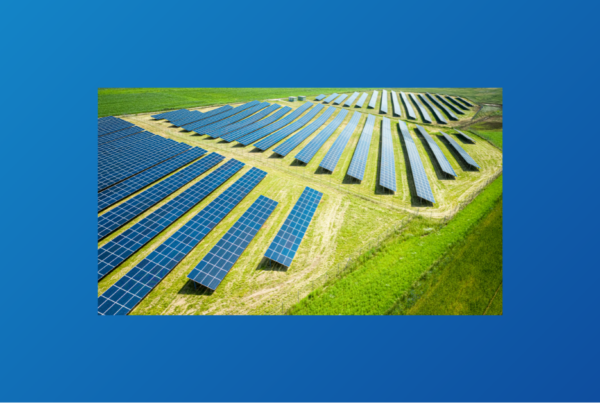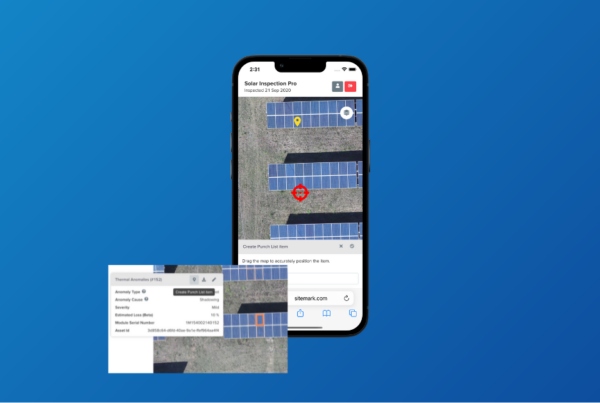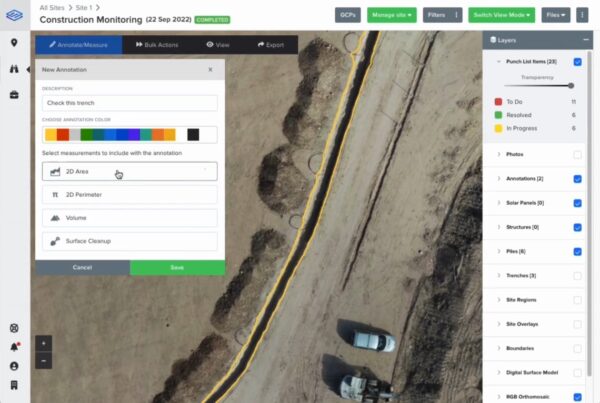One of Sitemark’s behind-the-scenes experts is certified Thermographer Sophie Sándor.
While you might not be familiar with that job title, by the time you finish reading her story, you’ll be impressed by this unique field. Thermographers deliver a wide range of benefits to diverse industries – from detecting water and gas leaks to search & rescue missions as well as traveler temperature screenings. Sitemark has in-house skill sets that deliver premium analysis, with experts in fields from artificial intelligence to surveyors and drone pilots. In this article, we interview Sophie to understand what thermography brings to the table for the solar industry.*
What exactly is a certified thermographer? 
- Thermography is the acquisition and evaluation of thermal information from non-contact thermal imaging devices.
- A thermographer is trained in the application of thermography, enabling them to evaluate and interpret a thermal image. They are qualified and certified based on extensive training, hands-on experience, and examination.
What kind of training is required?
- While thermographer certification represents an investment, it is an investment that typically pays valuable returns. Not only do certified personnel produce higher quality inspections, their inspections are also more technically consistent. Uncertified thermographers are more likely to make costly mistakes—such as inaccurate recommendations regarding the criticality of a problem or problems being missed altogether.
- The IEC TS 62446-3 standard requires personnel to be certified based on German DIN EN ISO 9712 ASNT-SNT-TC-1A (for North and South America) or British BINDT PCN ISO 18436 (for EMEA, APAC, and LA).
Which industries use thermographers?
Plenty! Some examples include:
- Renewable energies (e.g. photovoltaic plants, wind energy farms)
- Construction for thermal insulation or to determine water ingress
- Detecting gas leaks
- Underground piping
- Medical
- Archeology
- Agriculture
- Wildlife
- Search and rescue
What value does a Thermographer bring to the table for solar

- A thermal inspection is a non-contact temperature measuring technique. It enables fast measurements in real-time so that images can be analysed for reporting and comparison purposes.
- With their equipment and expertise, thermographers see what the eye cannot detect. In the infrared spectrum, one can observe certain faults that are not visible to the naked eye because all things that contains thermal energy radiate infrared radiation.
- Thermographers validate that a newly constructed solar site is in good condition, providing support if needed for potential insurance claims. They also make certain that no defects exist on newly installed panels and that the site is wired properly to avoid future string issues. And for existing sites, they check for hot spots due to damaged panels that can appear during the life of the site. Overall, a certified thermographer reviews the evolution and health during the full lifecycle of a solar site, giving peace of mind that the site is operating at an optimal level at all times.
What are some of your more interesting on-the-job experiences?
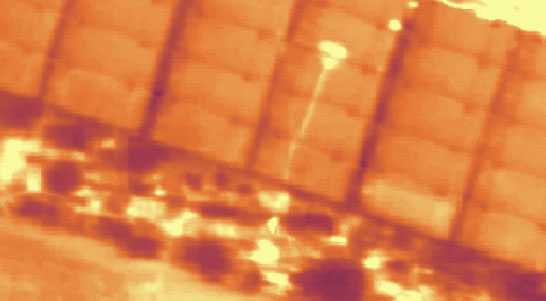
- My most valuable contribution is developing new products with R&D. After gathering test data for different sensors, I process it to see if it is compatible with our systems and if not, then suggest how to modify it. For example, I contributed to building a custom, automated recipe to stitch images for dual-axis trackers. These trackers are especially challenging due to their ability to constantly move like a sunflower following the sun. This makes it difficult for the computer as it is trying to match photos by looking for similarities, but the pictures have moving content.
- It continually surprises me that the smallest things can have such a big impact on solar panel productivity. For example, a worker leaving behind a glove or bird droppings on a solar panel (we could write a whole chapter on the horrors of bird poop). While these items may seem physically small, they create power loss and can lead to significant problems over time. In one case, the client set up a camera on a pole in an attempt to monitor for theft, instead the partial shading of the pole on a panel created local hotspots that affected the entire string.
- It’s hard to hide issues from thermographers as thermography reveals all the defects on site. But we are always curious and want to understand what is causing the issue. The imagination of the solar site designers never fails to impress; how inventive they are in filling every available space and in difficult terrain. Some clever examples I have seen include the shape of an octopus in Japan or the famous panda one in China. Sheep and goats are also common cohabitants with solar panels, helping keep down foliage, but extra care must be taken as they enjoy snacking on wiring.
- Here is where many will say – dream job alert. Solar sites are ideally placed in out-of-the-way locations with few people or structures. Their remoteness has led me to virtually travel to unique places around the world. I have worked on projects in the middle of the Chilean mountains to floating solar sites and the wilds of West Texas (you would be amazed at the number of rattlesnakes there). Many of these locations are only possible to be inspected by drones in protected areas where no people are allowed.
What are some of the ways you support your internal teams?
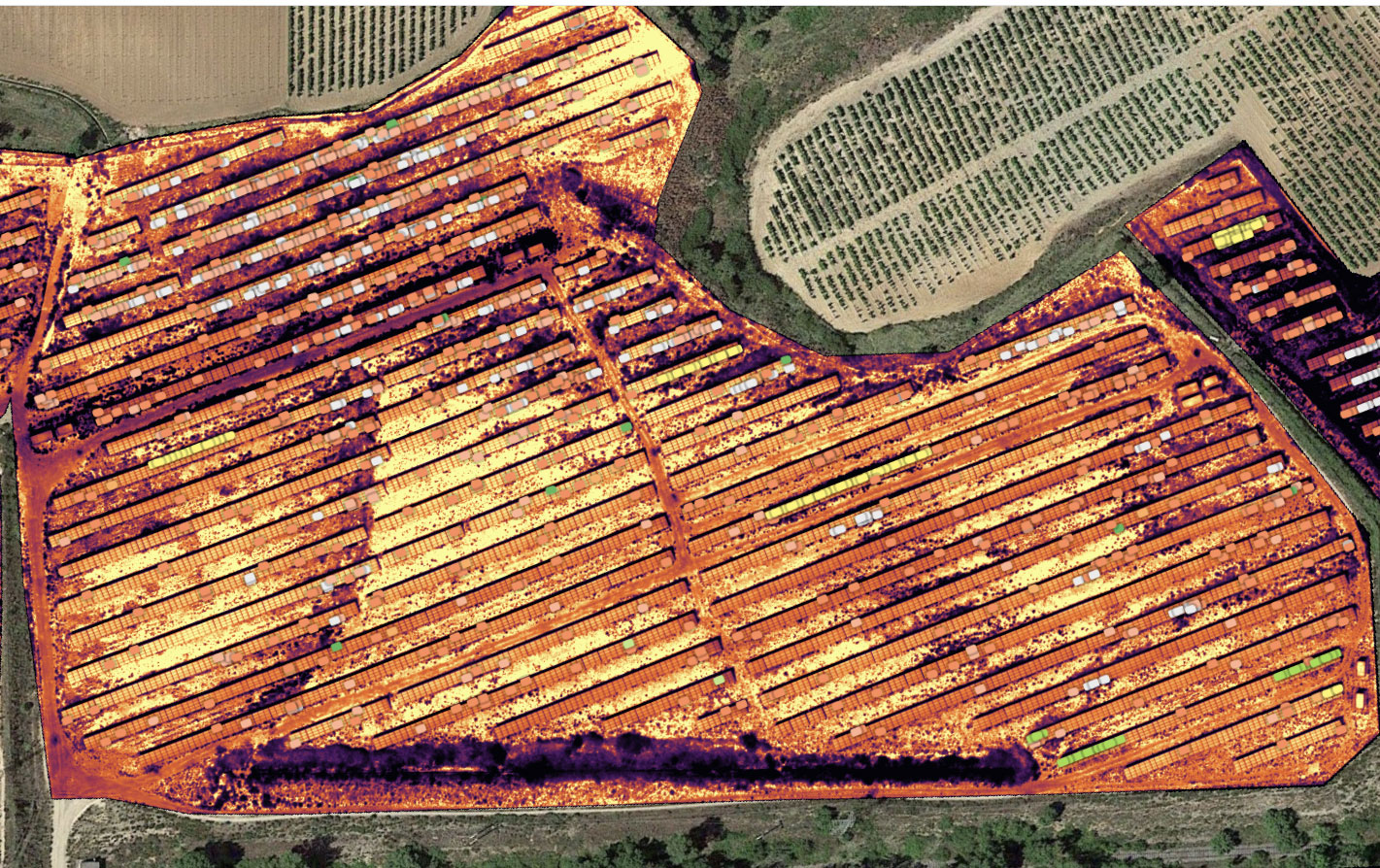
- I oversee the automated software in analysing, interpreting and making the data cleaner for software input. I am the human-in-the-loop enabling the highest quality output. This passion for detail in combination with the bird’s-eye view is well-suited for assessing the processing quality of the final data, e.g. are the images well-stitched. I validate the results generated by our AI software ensuring no anomaly is unmarked and the quality is at 100%. Through these data interpretations, I am “teaching” the software, helping it to increase future accuracy and performance.
- I also evaluate whether sensors are compatible with our systems and contain the required radiometric data (i.e. where each pixel contains an absolute temperature measurement). Radiometric cameras are very sensitive and can measure small temperature changes of only 0.05 kelvin. This is critical to allow our systems to detect and determine the different anomalies.
How do you help solar site stakeholders?
- My training and experience help me bring a premium level of analysis and interpretation to evaluating solar sites. I am able to give actionable feedback on remediation to help solve the issue. My analysis includes validation of the computer-generated results of elements such as anomaly cause, PIDs, hotspots, bypassed substrings, and many others.
- In some cases, customers challenge the results of our inspection. I can then leverage my experience to help teach clients why an anomaly was not marked, for example, the variation on the image may just be a cloud reflection on thin-film panels. I help solar sites save money by fixing issues sooner and sometimes, it only requires simple remediation measures such as identifying shading that is easily fixed. In other cases, the computer can be tricked, but thanks to our unique approach with humans-in-the-loop we can ensure we identify those false positives.
How did the training help you in your job?
- The certification training gave me an understanding of the background of thermography and the difference between qualitative and quantitative thermal data for reporting. These help interpret thermal signatures or defaults in materials.
- Understanding the impact that scene temperature range and flight height play in correct sensor settings. I also learned what cannot be changed from a photo (i.e. range, focus, and composition) and what settings can be changed (e.g. emissivity which differs per material).
- Overall, the training had to be somewhat high level to apply to all professions, meaning more theory was covered in class. However, for me, in practice is where you learn how to play with different camera settings to understand the sensitivity of different types of sensors. This is where you learn that wrong results can easily occur so input must be based on experienced quantitative and qualitative interpretation.
The bottom line is that everyone wishes solar site inspections, analysis and reporting could be 100% automated – but that is an illusion. For analysis and output that you can trust, you need a healthy mix of state-of-the-art automation and a human-in-the-loop. The thermographer is a key ingredient to ensuring the highest quality standards that optimize efficiency and reduce losses for the PV industry.
If you want to find out more, please get in touch.
* This interview is an excerpt from the one originally published in Power & Energy Solutions magazine
![]()
